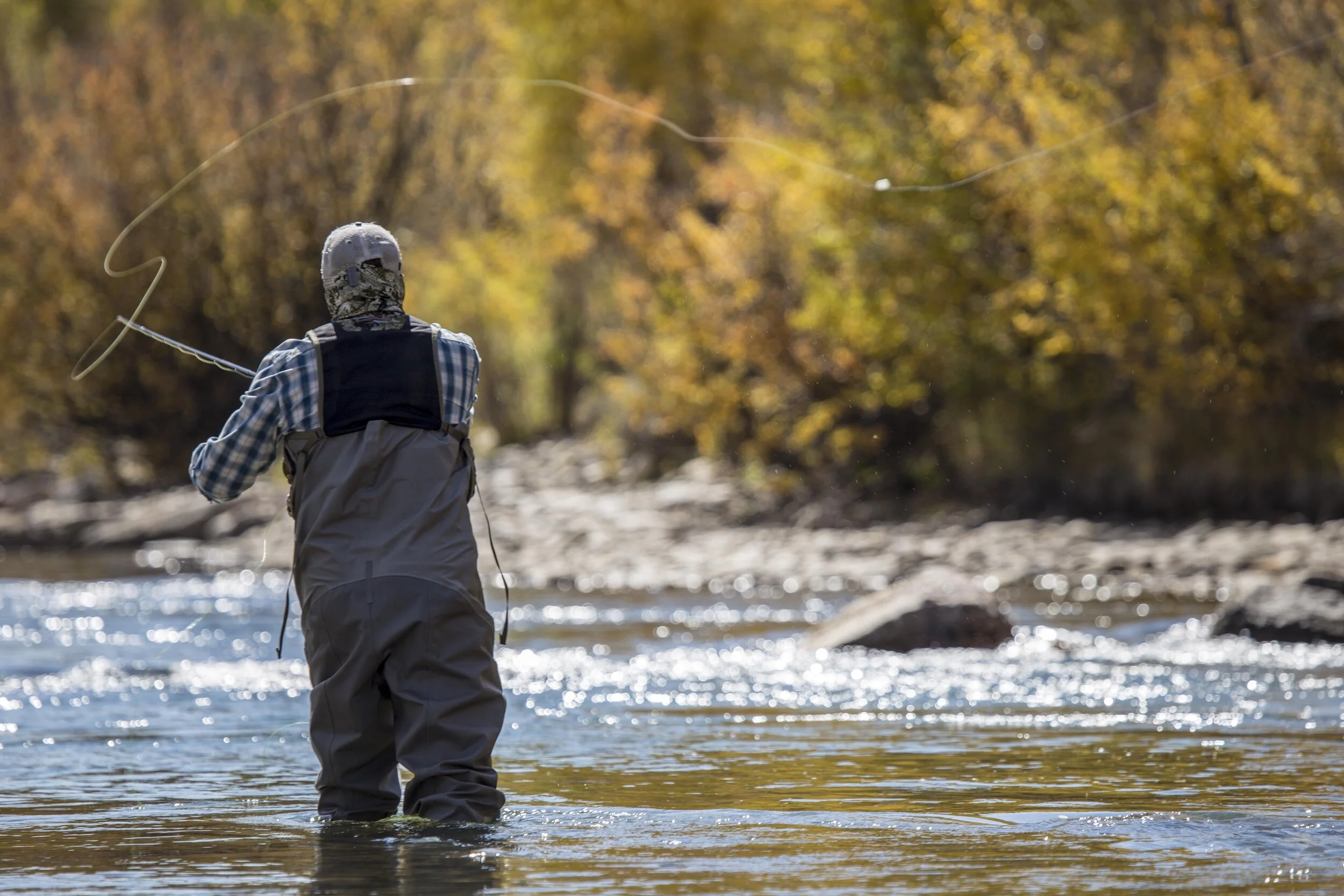If you can’t get to the water, you can’t fish it. It’s that simple. We’ve all spent time at the top of a canyon looking down at the river wishing, saying “If only I could get down there and fish that riffle, they’ve got to be stacked in there!” We all have those “if only” spots. In my opinion, there are three types of “if only” spots: 1) If only it wasn’t private property. 2) If only I had a boat. 3) If only I didn’t have a bad knee, ankle, shoulder, hip etc..
From my time on the water and a few years guiding, I noticed that it’s often not the double haul that stops people from catching fish. What limits people is simply accessing the water and dealing with their aches and pains. Getting down the bank, wading out to the riffle, an achy shoulder, a bad knee, or balancing in a boat. The list is long, but we can control the length of the list. Let’s see if we can shorten that list up today by tackling shoulder pain.
Did you know that the sternoclavicular joint is the only joint that connects the shoulder to rest of the body? That is the joint right below your chin where the clavicle connects with the sternum. The rest of the shoulder floats on the rib cage and is held on only by muscles, tendons, and fascia. The rib cage is the foundation for the shoulder and a strong foundation is where we want to start building a healthy shoulder. A solid foundation starts with hip strength and core stability. You can test your core stability by performing exercises like Dead Bugs, Side Planks and Bird Dogs. If you can’t do these exercises, fix that issue first before looking at the shoulder. Next focus on keeping that core stability while adding in hip mobility. Golfers know that power starts in the hip, is transferred through the core, and is released in the extremities.
Once the foundation is solid then we begin to look at shoulder mobility and stability. Shoulder mobility comes first. There are a lot of muscles involved in shoulder movements and we need to make sure each muscle can do its job. Each muscle should be able to stretch or contract at the right time. Poor shoulder mobility is a sign that something is not working the way it should. This can be tested by performing the Apley Scratch Test. Fixing shoulder mobility is a combo of soft tissue work and stretching and rehab exercises. I recommend finding a good body worker that can assist you with getting the shoulder mobility back faster than trying to do it on your own. Fix the mobility problem before moving onto stability.
You don’t have to be Mr./Ms. Universe to cast a fly line, but we do need to lock our shoulders in and perform short bursts of power that will properly load the rod during a cast. Instability in the shoulder will create a poorly distributed load. That means something is being over stressed and is going to get injured. A great test for shoulder stability is a straight arm plank with alternating elbow touches. If you are lacking in stability, find a great strength coach or rehab specialist that can help you build it back slowly. In other words, don’t go from casting a 7 foot 3 weight rod to double hauling a 12 weight for tarpon. Take your time, do it properly, and don’t skip steps.
If you are dealing with shoulder pain, don’t be afraid to take a step back and rebuild from the base up. Start with that strong foundation in the rib cage, get your shoulder mobility back, and then build up stability and strength in the shoulder. Stay healthy and show your body some love. It’s better to take care of a bad shoulder now than to wait until it gets added to your “if only” list.
Links to exercises:
Dead Bugs - https://www.youtube.com/watch?v=8my1MTa0CWw
Side Lying Glute Bridge - https://www.youtube.com/watch?v=Hd_g6LcFz58
Bird Dogs - https://www.youtube.com/watch?v=k2azbhhuKuM
Apley Scratch Test - https://www.youtube.com/watch?v=oORkZ2gLlbA
Daniel Hodgson
is a Sports Chiropractor at Kinetic Chiropractic in Lafayette Colorado. Additionally, he has a Masters of Sports Medicine and is a Certified Chiropractic Sports Physician. He is an avid fly fisherman, member of the Denver TU chapter and hopes to bring sports medicine into the fly-fishing world. He has created a movement screen named “The Flying 7” which consist of 7 movement tests every fly fisherman should be able to perform to have a pain free day on the water. To learn more about “The Flying 7” and get any questions answered please reach out by email to DanHodgsonDC@gmail.com.


